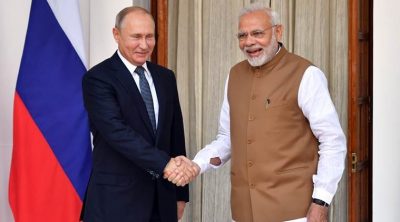The Prospects of Russia and India Jointly Leading a New Non-Aligned Movement
Abstract

The ongoing global systemic transition is transforming international relations from its erstwhile unipolarity to what experts agree is either multipolarity or, less popularly, bipolarity. However one chooses to describe the present world order, it’s clear that the US and China are the main global players, which places Russia and India – decades-long strategic partners – in a junior position vis-a-vis both of them, especially their mutual Chinese neighbor with whom they share membership in BRICS and the SCO. The neorealist school of International Relations Theory preaches the need to pursue national interests, which sometimes align with others’, and it is argued in the article that it is with this idea in mind that both countries have a motivation to jointly improve their strategic positions relative to the People’s Republic, albeit in a non-hostile manner that avoids the risk of inadvertently triggering a security dilemma and reversing the recent gains made in Eurasian integration.
Two articles published by Russia’s Valdai Club in 2019 indicated the possibility of creating a new Non-Aligned Movement, with the most recent one proposing that it be jointly led by Russia and India in order to advance the aforementioned neo-realist objective of balancing China. This suggestion is very intriguing and deserves some further elaboration, to which end the present research was conducted in order to place the new Non-Aligned Movement proposal in a strategic context relevant to the ongoing global systemic transition. Nearly a dozen articles and reports by Russian experts were analyzed, resulting in the conclusion that the proposal is a promising one but requires much more research into its challenges and opportunities in order to become more than just a proposed concept. In the event that any tangible progress is made on it, however, it must be done so extremely carefully in order for China not to misunderstand its intentions.
Click here to read the full text.
*
Note to readers: please click the share buttons above or below. Forward this article to your email lists. Crosspost on your blog site, internet forums. etc.
Andrew Korybko is an American Moscow-based political analyst specializing in the relationship between the US strategy in Afro-Eurasia, China’s One Belt One Road global vision of New Silk Road connectivity, and Hybrid Warfare. He is a frequent contributor to Global Research.

